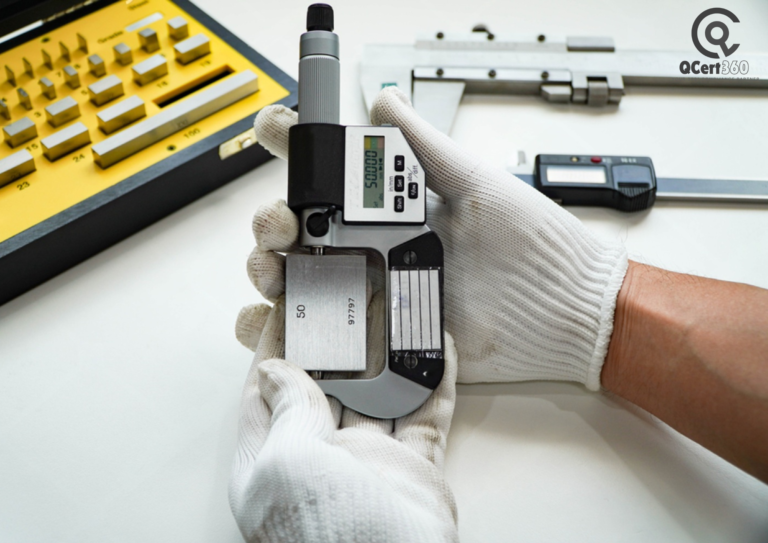
In industries where precision is non-negotiable — from healthcare to manufacturing to environmental monitoring — accurate lab testing isn’t just a nice-to-have. It’s a matter of safety, trust, and compliance.
Think about it: a faulty blood test could mean the wrong diagnosis, contaminated food samples could reach grocery shelves, or mis calibrated tools could compromise entire engineering projects. These aren’t minor mistakes; they’re failures that can cost lives, damage reputations, and destroy businesses.
This is exactly where ISO 17025 certification becomes crucial. It’s the international gold standard for testing and calibration laboratories. A lab with ISO 17025 accreditation demonstrates that its results are accurate, reliable, and globally recognized. Whether you’re testing drinking water, verifying the safety of pharmaceuticals, or calibrating precision instruments, ISO 17025 gives assurance that your findings are trustworthy anywhere in the world.
Let’s dive into what ISO 17025 really means, why it matters, and how labs can achieve and maintain this certification.
What is ISO 17025?
ISO 17025 is an international standard that specifies the general requirements for the competence of testing and calibration laboratories. Published by the International Organization for Standardization (ISO), it is widely recognized across industries and countries.
Unlike many standards that focus mainly on management systems, ISO 17025 goes a step further. It combines quality management with technical competence. In other words, it doesn’t just ask labs to follow good practices — it requires them to prove they can consistently deliver accurate, reliable results.
The standard covers two broad categories:
- Management Requirements – Quality policies, document control, record-keeping, internal audits, corrective actions, and continual improvement.
- Technical Requirements – Staff competence, method validation, measurement traceability, calibration of equipment, sample handling, and result reporting.
The big idea here is that even the most advanced lab equipment is useless unless the people running it are trained, the methods are validated, and the processes are transparent. ISO 17025 provides that framework.
Why is ISO 17025 Certification Important?
The stakes in laboratory testing are incredibly high. A single inaccurate result can trigger a domino effect with serious consequences. Let’s look at a few examples:
- Healthcare – A miscalibrated analyzer could lead to a wrong diagnosis, delaying proper treatment for patients.
- Pharmaceuticals – An incorrect purity test might allow unsafe drugs to reach the market, risking public health and resulting in recalls.
- Food Safety – If pesticide residues or allergens go undetected, contaminated products could reach consumers, sparking health crises and lawsuits.
- Engineering & Trade – Inaccurate calibration of measuring devices can cause product failures, rejected shipments, and international trade disputes.
ISO 17025 certification ensures:
- Accuracy – Results are reliable, consistent, and defensible.
- Global Recognition – Certified labs produce results that are accepted internationally without the need for duplicate testing.
- Compliance – Labs align with both regulatory and industry-specific requirements.
- Customer Confidence – Clients know they can trust your reports, giving your lab a competitive edge.
In short: without ISO 17025, your lab’s credibility will always be questioned. With it, your data speaks for itself.
ISO 17025 Key Requirements
So, what does a lab actually need to do to comply with ISO 17025? Here are the essentials:
- Competent Personnel – Staff must be trained, qualified, and periodically assessed to ensure they can carry out tests correctly.
- Calibrated Equipment – Every piece of equipment must be routinely calibrated against recognized standards, with traceability to international benchmarks.
- Validated Methods – Testing methods must be scientifically validated and proven to deliver accurate, repeatable results.
- Environmental Control – Conditions like temperature, humidity, and cleanliness must be monitored and controlled to avoid influencing test outcomes.
- Documented Quality System – Everything must be documented: procedures, training, equipment calibration records, and corrective actions.
Think of these requirements as the backbone of trust. They ensure that test results aren’t just numbers on paper but evidence-based conclusions that can withstand scrutiny.
How to Achieve ISO 17025 Certification – Step by Step
Getting ISO 17025 certified isn’t something you achieve overnight. It requires structured planning and commitment. Here’s the roadmap:
- Understand the Standard
Start by studying the requirements thoroughly. Both management and technical aspects must be understood across all levels of the lab. - Gap Analysis
Compare your current processes with ISO 17025 standards. This highlights what you’re already doing well and what needs improvement. - Develop a Quality Management System (QMS)
Create a QMS that documents every aspect of your lab operations, from sample intake to reporting results. - Train Staff
Employees should be trained not only in lab techniques but also in the requirements of ISO 17025. Competence is at the heart of compliance. - Validate Methods
Ensure that all test methods are scientifically valid and capable of delivering consistent results. - Calibrate Equipment
Every instrument must be calibrated regularly and traceable to international measurement standards. - Internal Audit
Before facing external auditors, conduct a thorough internal audit to identify and correct non-conformities. - External Assessment
An accredited certification body will evaluate your lab against ISO 17025 requirements.
Certification
Once you pass, you’ll receive accreditation, typically valid for three years, with regular surveillance audits to maintain compliance.
The Link Between ISO 17025 and Accurate Lab Testing
Here’s the thing: ISO 17025 doesn’t just encourage accuracy — it demands evidence of it.
Take an environmental lab testing pesticide residues in food. Under ISO 17025, the lab must prove:
- Instruments are sensitive enough to detect pesticide levels at regulatory thresholds.
- Staff are trained to perform the analysis correctly.
- Results are consistent across multiple tests and over time.
By forcing labs to document, validate, and monitor every step, ISO 17025 reduces human error, eliminates guesswork, and guarantees accuracy.
Common Challenges Labs Face in ISO 17025 Certification
Getting ISO 17025 certification is a rigorous process, and most labs discover gaps they didn’t even know existed. Some of the most common hurdles include:
- Poor Documentation
ISO 17025 demands detailed records for every process — from how tests are conducted to how results are reported. Many labs struggle because they haven’t built a culture of documentation. Without written proof of procedures, calibration records, and training logs, compliance can’t be demonstrated, no matter how good the actual testing is. Auditors will ask for evidence, and if it’s missing, the certification fails. - Outdated Equipment
Even highly skilled staff can’t produce reliable results if they’re working with outdated or poorly maintained equipment. ISO 17025 requires labs to calibrate all instruments against internationally traceable standards. A lab using old devices that can’t be calibrated to the required tolerance levels risks inconsistent results and audit failures. - Insufficient Training
Competence isn’t just about having a degree — it’s about continuous training and documented proof of competence. Labs often underestimate the importance of structured training programs that ensure every technician can perform tests consistently and correctly. This is a big reason why some labs fail audits despite having modern facilities. - Resistance to Change
For some labs, ISO 17025 represents a major cultural shift. Staff may resist new processes, audits, or stricter accountability. Implementing the standard requires leadership buy-in and careful change management to make quality part of the daily routine, not just an external requirement. - Budget Concerns
ISO 17025 certification requires investment — in staff training, updated equipment, calibration services, and system improvements. While the upfront cost can feel heavy, the long-term return is significant. Labs that invest in compliance avoid the even bigger costs of rejected results, client loss, or regulatory penalties.
A water testing laboratory in Cairo was facing repeated complaints from clients about inconsistent results. Their problem? Instruments weren’t regularly calibrated, and staff were using outdated methods.
After adopting ISO 17025:
- A strict calibration and maintenance schedule was introduced.
- Staff were retrained on validated testing methods.
- Every step was documented in their quality management system.
The outcome? Variations in results dropped dramatically, client confidence soared, and the lab secured contracts with international companies that required ISO 17025-certified data.
Benefits of ISO 17025 Certification
The advantages of ISO 17025 go far beyond meeting compliance requirements. It’s a strategic tool for growth, reputation, and long-term success. Here’s how certified labs benefit:
- International Recognition
ISO 17025-certified results are accepted across borders, reducing the need for duplicate testing in international trade. For exporters, this global recognition is essential to meet buyer requirements and customs regulations. - Regulatory Compliance
Many industries — from pharmaceuticals to environmental monitoring — legally require ISO 17025 accreditation. Achieving certification not only ensures compliance but also prevents costly regulatory fines or bans. - Competitive Advantage
In tenders, contracts, and supplier approvals, certification often sets labs apart. A client choosing between two labs will almost always pick the one with ISO 17025 accreditation, knowing that results are trustworthy and traceable. - Reduced Errors and Disputes
Certified labs follow strict validation, calibration, and documentation processes. This reduces variability, prevents misinterpretation, and minimizes disputes with clients over results. The fewer the errors, the more efficient the operations. - Enhanced Customer Trust
Certification is a stamp of reliability. It reassures customers that the lab’s work isn’t just technically competent but also consistently monitored and verified by a global standard. Trust translates into long-term contracts and client loyalty.
Maintaining ISO 17025 Certification
Earning certification is only half the journey. The real challenge lies in maintaining it year after year. Here’s what ongoing compliance looks like:
- Regular Internal Audits
Labs must continually monitor themselves through scheduled internal audits. These audits help identify small gaps before they become big compliance issues during external assessments. - Updating Procedures and Documentation
Technology evolves, standards are revised, and client requirements change. Labs must keep their documented procedures current to reflect these updates. Outdated manuals or incomplete records can trigger audit failures. - Equipment Calibration and Maintenance
A certification is only valid if the lab’s equipment remains precise. This requires scheduled calibration, preventive maintenance, and detailed record-keeping. - Staying Updated with Standard Revisions
ISO standards are reviewed and revised regularly. Labs need to stay aware of updates to ISO 17025 requirements and integrate changes quickly into their systems. - Periodic Surveillance Audits
Certifying bodies conduct surveillance audits during the certification cycle (typically every 12 to 18 months). These audits verify that the lab continues to meet requirements, not just at the time of initial certification.
In practice, maintaining certification means embedding ISO 17025 into the lab’s culture. It becomes part of daily workflows rather than a box to tick once every three years.
Industries That Benefit from ISO 17025
While ISO 17025 is universal, some industries rely on it more heavily due to the critical nature of accurate testing:
- Healthcare and Diagnostics
From blood tests to imaging equipment calibration, accuracy can mean life or death. Hospitals, clinics, and diagnostic labs require ISO 17025 to assure patients and regulators of reliable results. - Food and Beverage
Labs testing for contaminants, nutritional values, or allergens must meet strict standards. ISO 17025 helps ensure that food products entering the market are safe, properly labeled, and compliant with regulations. - Pharmaceuticals
Drug purity, potency, and stability testing demand absolute precision. A single error could lead to recalls, regulatory action, or risks to patient safety. Certification safeguards both companies and consumers. - Environmental Monitoring
Whether it’s air quality, water purity, or soil contamination, environmental labs must deliver accurate results to protect communities and ecosystems. Governments often require ISO 17025 certification for these labs. - Construction Materials
Concrete strength, metal durability, and material safety tests all fall under strict compliance. Certified labs help ensure buildings, bridges, and infrastructure projects meet safety standards. - Electronics and Engineering
Calibration of precision instruments, sensors, and measuring tools is essential in manufacturing and engineering. ISO 17025-certified calibration labs are trusted by industries worldwide.
In all these industries, errors don’t just cost money — they risk safety, reputation, and legal consequences. ISO 17025 is the safeguard that ensures results are reliable and defendable.
Conclusion
ISO 17025 is more than a standard — it’s a global language of trust for laboratories. By certifying, labs prove that their results are accurate, repeatable, and accepted worldwide. This isn’t just about compliance with regulations; it’s about building credibility in industries where precision matters most.
Accurate lab testing protects public health, ensures product safety, and supports sustainable industry practices. Whether in healthcare, food, pharmaceuticals, or engineering, ISO 17025 provides the framework for delivering reliable data.
In today’s world, data drives decisions. If the data can’t be trusted, the decisions fail. That’s why ISO 17025 certification is not just an advantage — it’s a necessity.
A certified lab is more than compliant. It’s a trusted partner in safety, innovation, and global trade.
Frequently Asked Questions About ISO 17025
- What does ISO 17025 stand for?
It’s the international standard for competence in testing and calibration laboratories. - Is ISO 17025 mandatory?
Not always, but many sectors and clients require it for credibility and compliance. - How long does it take to get accredited?
Typically 4–12 months, depending on the lab’s current systems. - Who issues ISO 17025 accreditation?
National or international accreditation bodies (e.g., EGAC, UKAS, ANAB). - What industries need ISO 17025?
Medical labs, food testing, environmental testing, manufacturing QC, calibration services. - What’s the difference between ISO 9001 and ISO 17025?
ISO 9001 is for general quality management; ISO 17025 is specific to labs. - Can small labs get ISO 17025 certified?
Yes, the standard applies to labs of all sizes. - What’s a technical file in ISO 17025?
Documentation proving competence — methods, calibration records, results, etc. - Do lab staff need specific qualifications?
Yes, personnel must be trained and competent in relevant testing methods. - How often are ISO 17025 audits done?
Initial certification, then annual or biannual surveillance audits. - What happens if we fail an ISO 17025 audit?
You can correct nonconformities and request a reassessment. - Is ISO 17025 recognized globally?
Yes, results are often accepted internationally under MRAs. - Can we use ISO 17025 in marketing?
Absolutely — it’s a strong trust signal for clients. - What’s the biggest challenge in ISO 17025?
Maintaining consistent documentation and method validation over time.


